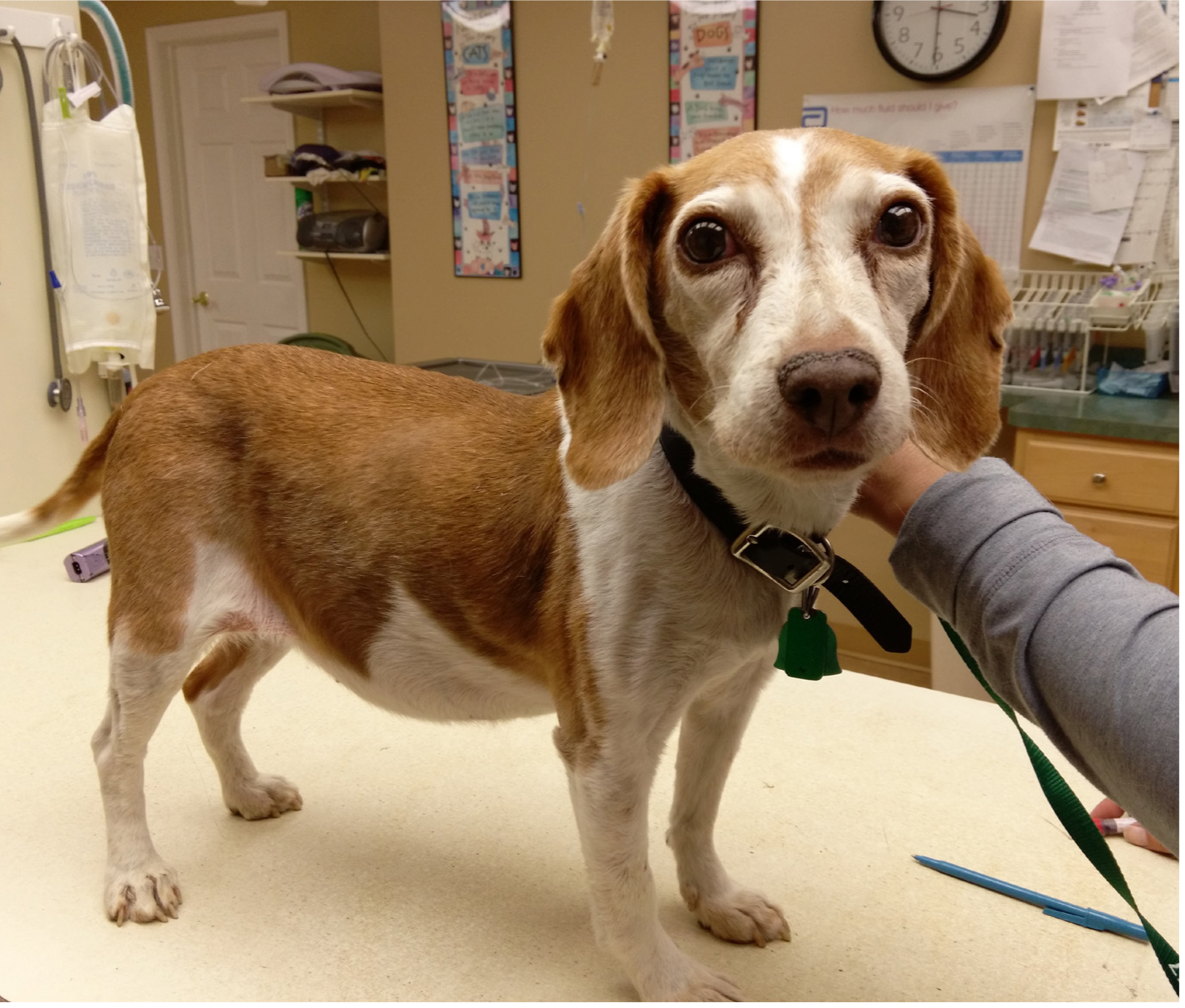What is Cushings in Dogs?
Cushings Disease occurs when dogs produce too much cortisone. Its symptoms include increased drinking and urinating habits, an abdominal pouch appearance and thin skin.
Your vet will perform a complete health examination and collect as much information about the symptoms your dog is displaying as possible, before conducting blood and urine tests to make a proper diagnosis.
Causes
Cushings (or hyperadrenocorticism) is an endocrine condition in which your dog produces too much cortisol steroid hormone. Cortisol helps your pup cope with stress, control their weight and fight infections while keeping blood sugar stable; when their levels rise too much cortisol causes illness and changes to their body.
Cushing’s disease in most dogs is due to a tumor on the pituitary gland, which overproduces a hormone known as adrenocorticotropic hormone (ACTH). ACTH causes adrenal glands to produce too much cortisol; most pituitary tumors are benign; however, prognosis may worsen for large tumors or when these affect other parts of the brain.
About 15% of patients suffering from Cushing’s have an adrenal gland tumor which produces excess cortisol without influence from a pituitary tumor, often more malignant than pituitary ones.
Cushing’s disease can also be caused by long-term use of corticosteroid medication. In such instances, this medicine should usually be given orally and prescribed to treat allergies or arthritis in your pet. For this reason it is crucial that pet owners consult their veterinarian regarding these steroid medications and follow any specific prescription instructions exactly.
Your veterinarian will use various blood tests and diagnostic imaging tests to diagnose Cushing’s disease. They may look at your urine cortisol to creatinine ratio and possibly perform an abdominal ultrasound, among other measures, in order to ascertain whether the disease stems from pituitary or adrenal glands and what kind of treatment will best address them.
Your veterinarian will want to know about any previous illnesses or injuries your dog has had and obtain a complete medical history from them. They may also perform a complete blood count (CBC), which helps evaluate liver and kidney functions. Some dogs exhibit signs of Cushing’s disease such as drinking more water and using the bathroom more often; there may also be diarrhea episodes and weight changes as well.
Symptoms
Cushing’s Disease in your dog is caused by excessively elevated cortisol levels in their body, which plays an essential role in relieving stress, regulating weight, fighting infections and keeping blood sugar at optimal levels. But too much cortisol can lead to complications like liver enlargement, increased blood sugar, muscle weakness and eventual hypertrophy (pot belly).
Cushing’s Disease in Dogs (or Cushing’s Syndrome as it’s often called) is most often the result of a pituitary gland tumor producing hormones that stimulate adrenal glands to produce excessive cortisol production. Another 15-20% are caused by tumors on either or both adrenal glands which may either be benign or malignant in nature – these tumors may affect any breed of dog.
Cushings symptoms usually remain consistent regardless of its form. These may include your dog needing more frequent walks outside for urination and drinking more water, having indoor accidents more frequently and experiencing increased appetite due to too much cortisol interfering with kidney absorption, leading him or her to drink and urinate more.
If your dog exhibits any of the following signs, make an appointment with your vet right away. They will want to learn about its medical history before conducting a full physical exam. In addition, urine samples or blood work may be taken in order to check cortisol levels.
Cushings symptoms may be difficult to distinguish from those caused by other conditions that affect older dogs, so diagnosis may take some time. Your veterinarian will need to take blood samples from your pet as well as use ultrasound technology to detect any tumors on the adrenal glands.
Once your pet has been diagnosed with Cushings syndrome, medication will need to be given that will reduce cortisol production from his adrenal glands. While taking these medicines may be costly and require regular bloodwork checks while your pup takes them.

Diagnosis
Cushing’s disease in dogs is a health condition in which their bodies produce too much cortisol, a steroid hormone. Cortisol is produced in two glands next to the kidneys and essential for normal body functioning, yet excessive cortisol production can have serious repercussions – symptoms include lethargy, drinking more water than normal and needing to go outside more often to urinate than usual – all signs that your pup could have Cushing’s.
Cushing’s disease is typically caused by tumors on either the pituitary gland or adrenal gland. When dogs acquire these tumors, they often produce excessive cortisol because the messages being sent by these tumors tell their glands to produce more cortisol than necessary. About 85% of Cushing’s disease cases arise due to pituitary gland tumors while 15% originate in adrenal gland tumors.
One symptom for dogs may include drinking excessively, needing to go outside more often, having accidents indoors and losing hair on both their tail and body. Cortisol produces muscle weakness which makes the animal appear chubbier around the belly but thinner in their limbs; panting is another symptom as more cortisol production from their abdominal organs produces weight gain in their abdomens, producing pot-bellied appearance in some instances.
If your dog has Cushing’s disease, then it will need to visit their veterinarian on a regular basis and take medication in order to maintain healthy cortisol levels. Dosage must be adjusted carefully as too little could lead to Addison’s Disease (low cortisol levels) while too much could potentially cause diabetes in dogs.
If Cushing’s disease is due to a tumor, your vet will conduct a full examination with an ultrasound scan of both pituitary gland and adrenal gland and may prescribe medication to shrink it before surgery can take place. A small tumor with good prognosis can often be treated successfully with surgery; however if malignancy sets in treatment will be more challenging.
Treatment
Cushings (hyperadrenocorticism in its full form), is when your dog produces too much cortisol steroid hormone. While cortisol is needed for normal body functioning, too much of it may cause problems. Your pet’s adrenal gland – located next to their kidney – should normally respond to signals sent from its pituitary gland in its brain; however if a tumor exists on either of these organs then this control mechanism becomes compromised, sending too many signals back out and producing too much cortisol cortisol production.
Your dog may show symptoms including increased thirst, urine production and frequency of urination, weight loss, muscle weakness, skin changes including an apparent potbelly that appears sag, lethargy and reduced immunity. In cases where your pet is diabetic, cortisol levels may become unbalanced causing complications to arise which could further compromise blood sugar balance levels causing complications to arise which further decrease immunity levels further compromising their wellbeing.
If your vet suspects your pet of having Cushing’s, they will perform a physical exam and conduct several tests, such as complete blood panel, urinalysis and full chemistry panel tests. They may also request ultrasound of abdomen as well as low dose dexamethasone suppression test which involves taking blood before and after administration of artificial cortisol to gauge how effectively the adrenal glands are working.
Your veterinarian will typically prescribe medication to help manage cushing’s, such as mitotane. Mitotane works to regulate cortisol levels in your pet’s blood, although an initial induction phase and subsequent blood tests must take place before administering this dose to ensure it works effectively. Other forms of therapy, including surgery to remove tumors from their adrenal gland or brain may be necessary, though this process can be costly and risky.
Most dogs with cushing’s will require medication for life to manage their steroid levels, and your vet can advise on the most suitable course of treatment depending on factors like budget, health risks and your own family circumstances.

